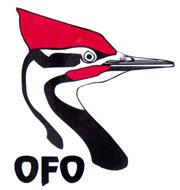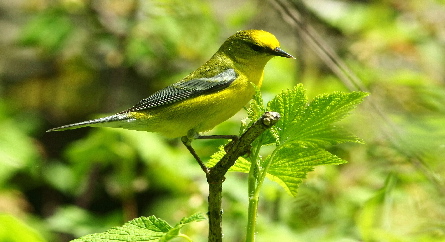| Grand Bend | Hawk Cliff and Other Hawk Watch Locations |
London Area
Grand BendTop
October 28 2018 (Sunday) Grand Bend, Pinery PP, Kettle Point
Leader: Donald Pye.
We had a total of 10 people that met at 0830 to do some Fall Birding . The rain was Light and stopped within half Hour. It was nice till the last Hour. The Rain started again. By then we had a Total Of 80 Species for the day. I was early and there is a small water hole at the back of the Store and 2 Common Redpolls popped up. When the Group started we went looking for the Redpolls and a small bird at the edge of the water got our Attention. Finally it came out in the open a Nelson Sparrow. Later we found the Redpolls. A life bird for most of us. Next the Beach. Not much was flying but a Horned Grebe, a Common loon and a Red-throated Loon were just off shore Next the Lagoons. The road to the back has a gate and was Locked. So we stayed out. Along the road were some Bluebirds and our only Warbler for the day, a Yellow-rumped. Next the Park. Lots of Feeders and no Feed in them. We did get a Titmouse and a Hermit Thrush. Another Red throated Loon. Next Kettle Point. A flock of Snow Buntings was on the beach. A Bald Eagle flew over. Also 2 Sanhill Cranes landed close by Out last stop was Forest Lagoons. We had a Rusty blackbird, 2 species of Shore Birds and several species of ducks a Rough-legged Hawk and a Golden Eagle.
October 22 2017 (Sunday) Grand Bend, Pinery PP, Kettle Point
Leader: Donald Pye.
10 People meet at Grand Bend for some late Summer and Early Winter Birding. First Stop was the Beach where we Found a Merlin , 2 Red Throated Loons Several Common Loons and some Horned Grebes. Next stop Grand Bend Lagoons where we had a lot of Ducks to look through. 2 Bald Eagles ,1 American Tree Sparrow Some Juncos, Sharp-Shinned Hawks, a Northern Harrier and a Rough-legged Hawk. Next Stop Pinery PP At lunch we had 1 Chipping Sparrow and a Titmouse. Next stop Kettle Point where we found a Surf Scoter. Last stop Forest Lagoons - some Ducks, no shore Birds. There was a Hermit Thrust by the edge of road. At the end of the day we had 69 species.
October 23 2016 (Sunday) Grand Bend, Pinery PP, Kettle Point
Leader: Donald Pye.
We had 17 people for the trip today. First stop the Beach and with a strong wind and big waves; we did not stay long. Next stop the Grand Bend Lagoons. With the construction of the water treatment plant finished the ponds at the back are still accessible. We had 2 Horned Grebes plus the usual Ducks. Next stop the Pinery Provincial Park. While eating lunch we watch both Nuthatches, several Titmouse, a purple Finch,and a lone Chipping Sparrow eating from the feeders. Next stop Kettle Point where we found 3 Black Scoters, and some flyby White-winged Scoters. Next stop Forest Lagoons where we added some Pintails and some Shorebirds to the list - Dunlin and Killdeer. Also there were some Rusty Blackbirds with the Red wing Blackbirds. At the end of the day we had 75 Birds.
October 26 2014 (Sunday) Grand Bend, Pinery PP, Kettle Point
Leader: Maris Apse.
On Sunday, a small group of enthusiastic birders led by Maris Apse started at the Grand Bend beach and faced strong west winds and large waves. There were very few ducks flying about but we did see several Co. Loons flying over and an adult Bald Eagle. Unfortunately, the Grand Bend sewage lagoons are under construction so we had to skip one of the usually more productive sites on the route. Pinery Provincial Park was very quiet, but there was a very cooperative American Redstart by the visitor center and a Red-tailed Hawk that posed very low in a tree for photos. There were very few birds at Kettle Point because the usual roosting spots for birds were covered with the high water. Two Killdeers were still hanging around. After most people had left we managed to scare up one lone Snow Bunting on the shore. The final tally was 47 species.
October 27 2013 (Sunday) Grand Bend, Pinery PP, Kettle Point
Leader: Maris Apse.
More than 2 dozen members from as far east as Peterborough met at the Sobey's parking lot in Grand Bend at 08:30 to find a scheduled power shutdown, which caused a short delay (some birded from the parking lot, seeing several loons fly overhead, a few American Robins and a Hairy Woodpecker etc.) until those using the facilities were ready to depart to the beach.
It was quite windy, with heavy breakers and cold but at least dry and worth the effort with several loose flights of both Common and Red-throated Loon flying overhead, 2 Bald Eagle and 2 Peregrine Falcon soaring high for long looks. Some saw a Merlin whilst several Red-breasted Merganser and fewer White-winged Scoter and other ducks flew by along the beach. About 90 minutes sated our appetites for the biting wind and we trooped off to Mollard Line to recover some body heat and bird the 4 lagoons in more comfort. We tallied over a dozen duck species, an unexpected Red-necked and Eared Grebe, a dozen American Coot, adult Northern Shrike, both Kinglet species, a Tree Swallow, Yellow-rumped Warbler, Red-winged Blackbird, American Kestrel, Sharp-shinned Hawk and American Tree, Song, Swamp and White-crowned Sparrow.
En route to Pinery Provincial Park we saw a Red-tailed Hawk, several Horned Lark and Mourning Dove. Whilst eating lunch at the Visitor Centre we saw some of the usual feeder birds including 2 Tufted Titmouse and enjoyed some of Penny`s Pumpkin cupcakes for dessert. We took a short walk down the Ausable river but the only bird of note was 1 female Common Merganser that quickly blended into the reeds and on the way back to the cars only a few juncos were seen. We drove to Burley bridge and were treated to a great spectacle of the 2 adult Bald Eagles flying around their nesting territory for several minutes - cameras were a-clicking.
We drove the Port Franks loop by L Lake adding Great-blue Heron and then via Army Camp Road and on to the beach at West Ipperwash Road where we had reasonably close looks at all 3 scoter species and Horned Grebe, 20+ Mute Swan, Great Black-backed Gull, Double-crested Cormorant and eventually 4 Pied-billed Grebe to round off the day. Our total count was 73 species.
October 30 2011 (Sunday) Grand Bend, Pinery Provincial Park, Kettle Point
Leader: Maris Apse.
By 0830 fourteen vehicles had gathered at Grand Bend Sobey's seeing a Kestrel here. By car pooling, 12 headed to the beach for a quite cool start to the day, seeing 3 species of Merganser, Ruddy Duck, Surf Scoter, Horned Grebe, Red‐throated Loon, Double‐crested Cormorant and 3 gull species. Our second stop at Grand Bend lagoons was quite productive with lots of waterfowl plus Golden‐crowned Kinglet, American Tree and Song Sparrows, Red‐winged and Rusty Blackbirds, American Pipit, Killdeer, Pectoral Sandpiper, Dunlin and Greater Yellowlegs and 4 Sandhill Crane as we returned to the cars.
We drove to Pinery via Mollard, Greenway, Cold Storage, Goosemarsh to the Museum parking lot to leave 2 cars whilst in the park. En route we saw Rough‐legged and Red‐tailed Hawks, Horned Lark, Eastern Bluebird, Northern Harrier, Dark‐eyed Junco, Blue Jay. We ate lunch at the picnic tables and saw Cedar Waxwing, American Robin and Cardinal here as well as a very fresh Red Admiral as the sun had raised the temperature. On the way to Burley Bridge we saw more Eastern Bluebirds, Downy Woodpecker but the Bald Eagles were not to be seen.
The VC feeders produced several Tufted Titmouse, 1 Fox Sparrow, a female Eastern Towhee and the usual chickadees and juncos. At Beach Parking #9 the water was quite bumpy making it difficult to identify some fairly distant ducks and we opted to go to the Heritage trail to seek the Red‐headed Woodpecker family ‐ we probably saw all 4 birds albeit 2 at a time as well as 2 Golden Eagle flying high over the old Ausable channel.
After retrieving 2 vehicles at the museum we headed to Kettle Point via Army Camp, driving onto the beach at West Ipperwash. We found all 3 Scoter species, several Common Loon, lots of Horned Grebe and more. At the main point we added 2 juvenile Bald Eagle, 3 adult Great Black‐backed Gull, Mute Swan, 6/7 Black‐bellied Plover and close to 300 Dunlin (until a dog spooked them)–but this made for some spectacular flights. A light morph Parasitic Jaeger was a fabulous close to a lovely day of birding with some very kind and co‐operative people. The total count for the day was 77 species.
October 31 2010 (Sunday) Grand Bend, Pinery Provincial Park, Kettle Point and/or Point Edward if strong north winds.
Leader: Maris Apse.
It was a very blustery Halloween day with intermittent rain, sleet and even a short burst of hail but some 2 dozen hardy OFO members met at 0830 hrs to enjoy some ‘birding around the bend’–pun intended!
Most of the waterfowl flying past the beach were quite far out but both Black‐and‐White‐winged Scoter(2 that landed were hard to see in the huge waves) gave some decent looks along with 2 Common Loon.
The lagoons were quite productive but also featured the first rainfall–3 Greater and 1 Lesser Yellowlegs, 1 Hudsonian Godwit, 3 Semipalmated and 4 Pectoral Sandpiper plus some 20 Dunlin were in the first pond and a Killdeer was heard from the adjacent field and several American Pipit were found in the weeds. A total of 14 duck species, including Bufflehead and Common Goldeneye were found, mostly in the second pond. Sparrows were hard to see in the tall weeds but 6 of the 9 Emberizids of the day were found as we walked aall the way back to the 4th lagoon, where we added Yellow‐rumped Warbler.
On Klondyke Road we stopped to look at a few more sparrows but no new species and carried on to Pinery P.P. to warm up at the Visitor Centre, enjoy feeder watching, lunch and some of Penny’s '’Zombie Finger Cookies’. A Brown Creeper, a dozen Pine Pine Siskin, a Field and several White‐throated Sparrow, plus Purple Finch (male and female), Tufted Titmouse and Red‐bellied Woodpecker were seen.
I missed seeing 2 Sandhill Crane off Northville Road but luckily 'eagle‐eye' Pye(Donald) found them and advised me at the next stop (for a Common Grackle) and we drove around the block to have good views. Along Army Camp road some saw a Pileated Woodpecker and we stopped at the Ipperwash Swales area finding a flock of about 16 Snow Bunting but nothing new. At Kettle Point the sun broke briefly, we admired a rainbow forming until a huge dark cloud loomed over us and driving rain began. We wrapped up the trip at 15:30 hrs after some saw a Great Blue Heron on a dump truck near the marina.
The day’s list totalled 70–not too shabby considering the difficult weather conditions–of 12 vehicles at GB Sobeys , 7 carloads of ‘diehard birders’ headed home for a well deserved rest.
1 November 2009 Grand Bend, Pinery PP, Kettle Point and/or Point Edward.
Leader: Maris Apse.
About 35 OFO members enjoyed a cool but dry day of birding the ‘West Coast of Ontario’. During the first hour at the beach we saw many waterfowl, including all 3 Scoter species, both Common and Red‐breasted Merganser flocks mostly flying downlake, about 40 Common Loon in various groupings of 3 to 20 mostly overhead angling inland. A few Horned Grebe, Long‐tailed Duck, Bufflehead, Common Goldeneye and Scaup kept us busy.
We walked around the first 3 lagoons seeing many more waterfowl including a male Wood Duck and 5 American Coot plus 3 White‐rumped Sandpiper, about 20 Dunlin and a Greater Yellowlegs. An Eastern Phoebe, Song, American Tree, White‐crowned, Fox and Vesper Sparrow were also seen.
At Pinery P.P. we had lunch at the Visitor’s Centre whilst birding (everyone saw several Tufted Titmouse). Downy, Hairy and Red‐bellied Woodpecker plus Field, Fox and White‐throated Sparrow and a female Purple Finch added interest. Along the river we saw several American Robin and Cedar Waxwing and an adult Bald Eagle before driving to Burley bridge, where 40 to 50 Hooded Mergansers and 3 Pied‐billed Grebe were seen along with a Red‐tailed Hawk.
At Kettle Point the American Avocet was seen by all and 4 Red‐necked Grebe played hide and seek in the bay and we saw 7 Mute Swan and a Great Black‐backed Gull southwest of the point.
Our last stop was at Cedar Cove marina where we watched about 10 Double‐crested Cormorant, about 15 Horned Grebe, both Tundra and Mute Swan and a Great Blue Heron. A flock of about 100 Tundra Swan turned inland as they flew over us. A fitting end to a nice day and as most of the cars were heading up the hill a few of us heard and then saw a flock of 9 Sandhill Crane fly right over us and down the lake (one carload had seen 2 of these earlier in a field and as we returned north we stopped to have a closer view).
During this day we had seen 23 Ducks, Geese and Swans, 3 Grebes, 4 Raptors, 3 Woodpeckers and 8 Sparrows for a total of 77 species tallied by the group to‐day.(I’m including a Northern Shrike at Army Camp Road seen by Donald Pye on his way back towards the Pinery).
Thanks to all the participants and especially my ‘helpers’ who found so many good birds to‐day–it’s such a pleasure to lead a group that is so willing to share and help each other with finding and identifying the birds we see.
4 November 2007 Grand Bend, Pinery Provincial Park, Kettle Point and Point Edward (north winds)
Leader: Maris Apse.
After outlining the day’s plan, 10 participants in 6 vehicles proceeded to the main beach, where we spent the first hour finding Horned Grebe, all 3 Scoter species, Common Goldeneye, Ring‐necked Duck, Redhead, Greater Scaup, Red‐throated and PACIFIC Loons. Blake Mann saw an adult Little Gull flying south with a flock of Bonaparte’s as we left the beach.
Grand Bend was our second stop, where we continued ticking waterfowl: American Coot, Green‐winged Teal, Gadwall, Northern Shoveler, American Wigeon, Black Duck, Bufflehead, Lesser Scaup, Ruddy Duck and a single white Snow Goose flying with hundreds of Canada Geese. We also had 1 Killdeer, Hairy and Downy Woodpeckers, Song and American Tree Sparrows, American Pipit, Horned Lark, Eastern Bluebird and our first of several flocks of Snow Buntings.
At Pinery Provincial Park we found 2 Bald Eagles, Red‐tailed Hawk, 2 Pied‐billed Grebes, Great Blue Heron, Red‐bellied and Red‐headed Woodpeckers, both Kinglets, Tufted Titmouse, both Nuthatches, Cedar Waxwing, American Robin, Gray Catbird, Swamp Sparrow and Purple Finch and ate lunch at the Visitors Centre.
En route to Kettle Point we located a Northern Shrike just south of the golf course on Elliott Road where it was yesterday. We saw our 1st Great Black‐backed Gull ’dominating’ a dead carp on the beach, while about a dozen Herring Gulls waited. At the point we saw the last 1 or 2 Double‐crested Cormorants and further south a Common Loon, 9 Dunlin and another flock of Snow Buntings.
Our last stop was at Forest Lagoons where we added Northern Pintail and Wilson’s Snipe to finish with 70 species (unless I add the American Kestrel I saw on my way home along Hickory Creek Road).
Reported by Maris Apse.
4 November 2006 Grand Bend, Pinery Provincial Park, Kettle Point and Point Edward
Thirteen OFO members in seven vehicles gathered at Sobeys parking lot by 08:30 this brisk November day to meet Emily and me for a day of driving and walking around Grand Bend. Carpooling reduced our convoy to six as we began at the Grand Bend Lagoons on Mollard Line, finding 13 species of waterfowl, including a flyover juvenile blue morph Snow Goose plus 1 Common and 3 Red‐throated Loons, 300+ Bonaparte’s Gulls in the third lagoon, 8 Dunlin flying about, several mixed flocks of Horned Larks, Snow Buntings and American Pipits, plus Rusty Blackbirds.
Then, we proceeded to Pinery Provincial Park. Some saw our only Winter Wren en route at the edge of a cornfield. We took a quiet walk on the Riverside Trail seeing 1 Red‐bellied Woodpecker, 1 American Tree Sparrow and Peter Fearon wrapping up the mist nets of the Ausable Bird Observatory for the season; he will be returning 7 April 2007.
From #3 Beach Parking Area we saw an apparently injured white morph adult Snow Goose on the beach and our first of 6 Sharp‐shinned Hawks. #7 Beach Parking Area produced our first few Tufted Titmice, 1 Yellow‐rumped Warbler, both nuthatches, Downy Woodpecker, Black‐capped Chickadees and Golden‐crowned Kinglets. At the Maintenance/Meeting area we found 1 Hairy and 2 adult Red‐headed Woodpeckers and a few more titmice. The Visitor Centre was closed (signage to the contrary) and the feeders mostly empty except for a few Dark‐eyed Juncos and American Goldfinches, 1 House Finch and titmice. We ate lunch and used the facilities near the closed store. We then walked downstream of the dam to find many American Robins and Blue Jays with a few Cedar Waxwings, more titmice and a Double‐crested Cormorant. Driving out of the park some of us saw a Pied‐billed Grebe.
After driving the Port Franks ’L Lake’ loop (Red‐winged Blackbird), we made a short stop at Ipperwash Beach seeing about 12 distant scoter species and 2 Double‐crested Cormorants. We continued to the parking area just south, where we found many American Robins and Cedar Waxwings while several Red‐tailed Hawks soared overhead. We drove the rather bumpy Kettle Point Beach and stopped at the Point, where we saw 2 Great Black‐backed Gulls, about 30 Dunlin, 2 Mute Swans, 3 Red‐breasted Mergansers and 2 Horned Grebes. One carload left for London and the rest drove to the Forest lagoons on Brush Line seeing about 1,000 Ring‐billed Gulls and about 500 European Starlings following the plow, 1 American Kestrel, a male Northern Harrier and a huge mixed flock of about 1,500 Snow Buntings and Horned Larks en route. We saw 10 Hooded Mergansers at the lagoons and the same waterfowl seen earlier. We scoped the big flock of field birds on the way out and found 2 or 3 Lapland Longspurs.
Our total for the day was 68 species: 17 waterfowl species, 2 species of Common Loons, 2 species of Grebes, 6 species of raptors, 4 species of gulls, 4 species of woodpeckers, but only 3 species of sparrows. I thank the participants for their cheerful dispositions, stamina and assistance on this inaugural late fall Grand Bend OFO Field Trip
.Reported and led by Maris Apse.
22 October 2000 Grand Bend Area
Led by Ian Platt and Ann White.
We had a great day for this outing, a continuation of the Indian Summer we have all been enjoying. There were 16 participants. After hearing that a Snowy Owl had just been spotted at Kettle Point, we quickly changed our plans and went straight there. It was very easy to see, sitting on a rock, and got ticked as a life-bird by one of the group. We watched it fly and get harassed by a couple of gulls, but it didn't seem too bothered. A Merlin came to sit in a bare tree where it could watch the birdwatchers.
We spotted a few flocks of shorebirds - Dunlin, Sanderling and Red Knot, then went on to where we could access the beach. There were mutterings from some participants about the east wind and jaegers, and someone else who had actually driven from Hamilton that morning, mentioned the word "gannet" . As soon as we drove onto the beach and got out of our cars we could see scoters close in and just in front of us. Amazing! We found both Black and Surf in the group. I remarked that this was just as good as Hamilton, but that gannet talk proved too much for one group and they decided to abandon Lake Huron for Van Wagners beach!
We visited Grand Bend sewage lagoons next which produced lots of birds. There were 15 species of waterfowl, Bonaparte's Gulls, coots, Pied-billed Grebes in the water; Killdeer, Tree Swallow, Rough-legged Hawk in the air, and kinglets, Yellow-rumped Warblers, redwings, Tree and White-throated Sparrows in the surrounding shrubs. The ducks were cooperative enough that all participants were able to see every species through a scope. Present were Redhead, Canvasback, Northern Pintail, American Black, 2 species of Teal, wigeon, Northern Shoveler, Gadwall, Lesser Scaup, Ring-necked, and of course Ruddy. They seem to be having a population explosion. From a pre-trip visit I knew there were White-crowned Sparrows in the cornfield , but everyone said they were too hungry, and wanted to go for lunch. Oh,Oh. Four more of our participants now decided that perhaps Hamilton was the place to be, with the chance of Jaegers and Gannets. The rest of us made for the Pinery Visitor Centre to watch the feeders while we ate. We saw Tufted Titmice and Purple Finch and picked up a few more species, (but no White-crowneds!). Touring around Pinery Park we saw many Hermit Thrushes on the Riverside Trail, Common (or Great Northern) Loon, Horned and Red-necked Grebes at the beach, a grackle in a campground, and the usual wood species near the river including many robins. We finished the afternoon with just over 70 bird species on the trip, life birds for several, and I think we all made some new friends. Thanks to the participants who made this a real fun trip.
Reported by Ann White
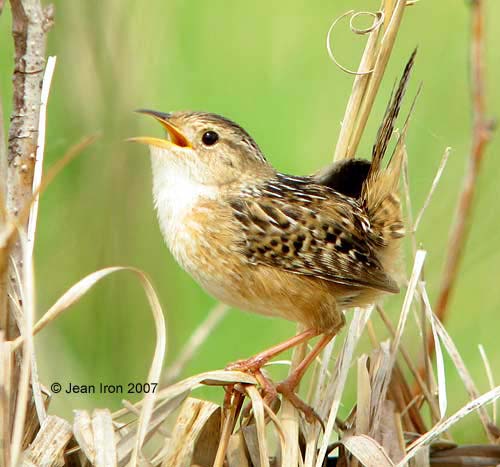
Sedge Wren
Photo: Jean Iron
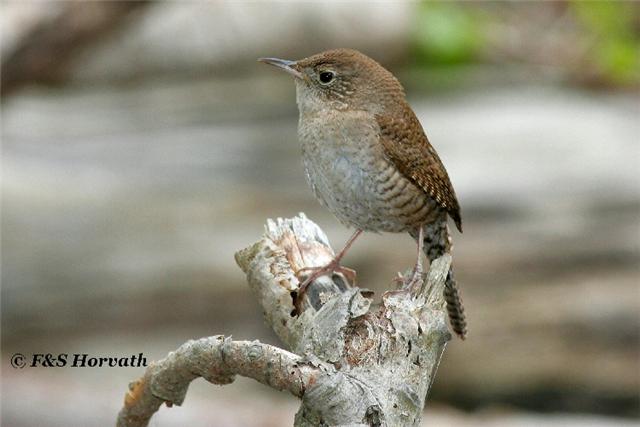
Northern House Wren
Photo: Frank and Sandra Horvath
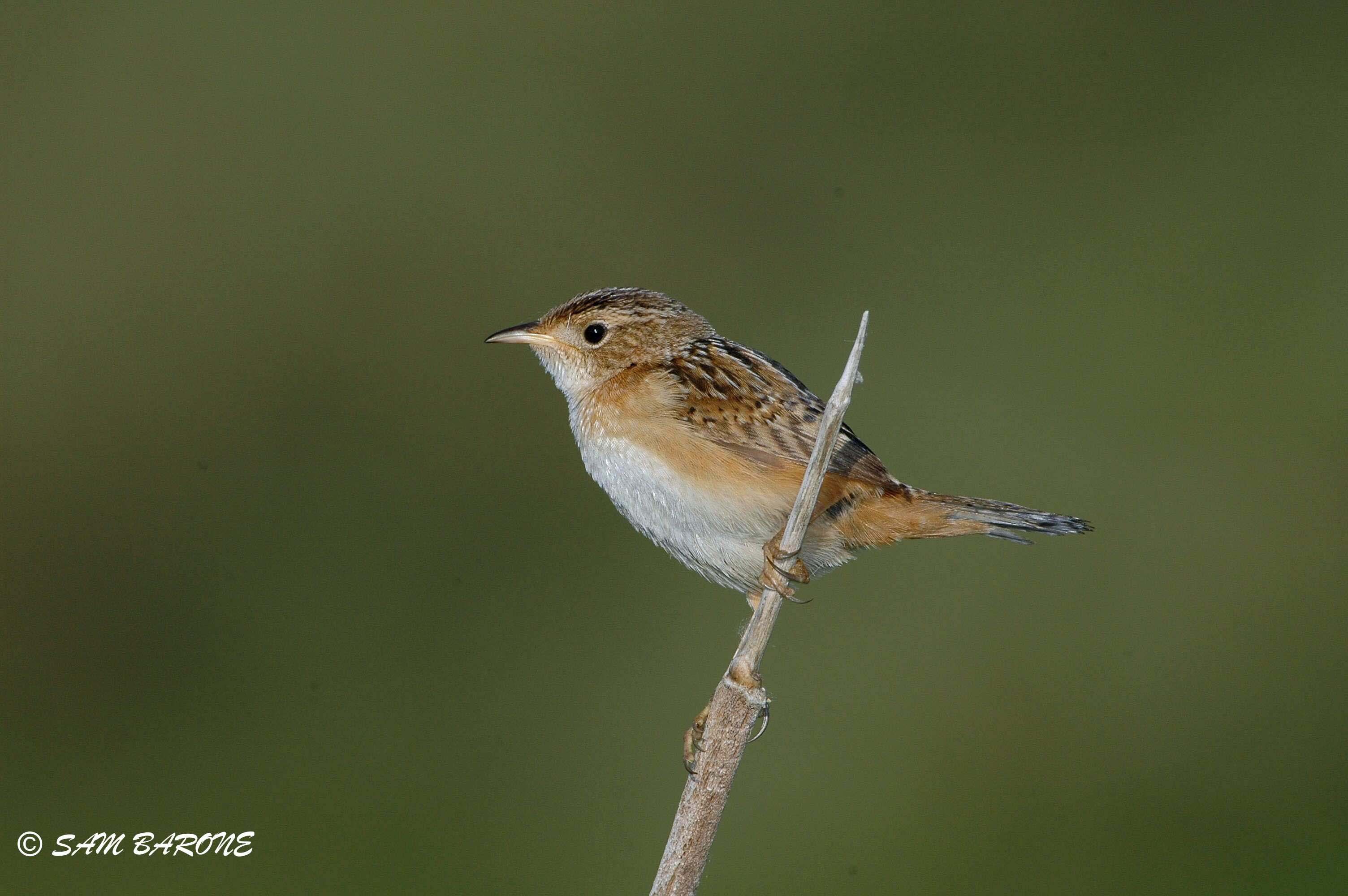
Sedge Wren
Photo: Sam Barone
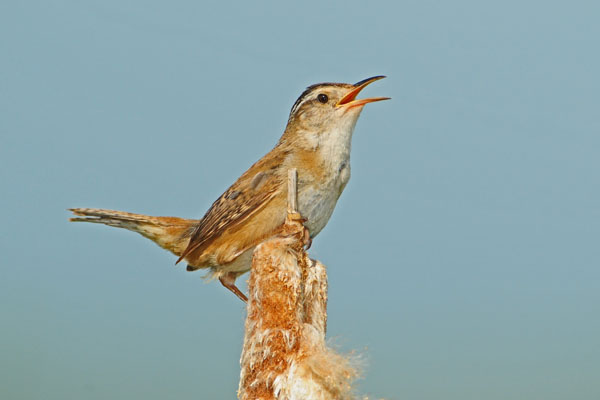
Marsh Wren
Photo: Sam Barone

Common Loon
Photo: Jean Iron

Common Loon
Photo: Frank and Sandra Horvath

Common Loon
Photo: Don Wigle
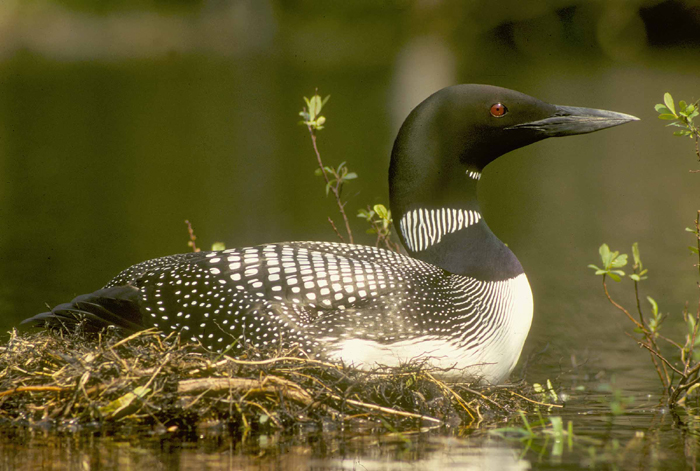
Common Loon
Photo: Mark Peck
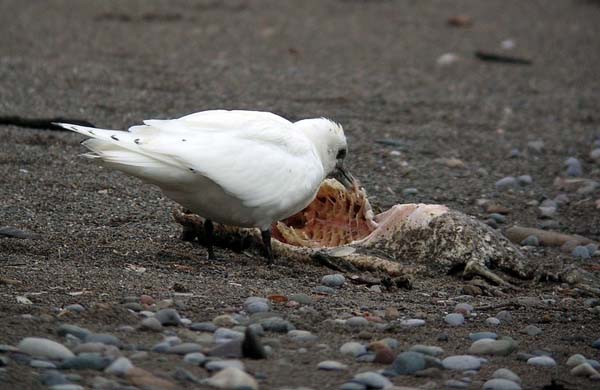
Ivory Gull
1st basic
Photo: Tim Lenz

Ring-billed Gull
Basic
Photo: Sandra and Frank Horvath
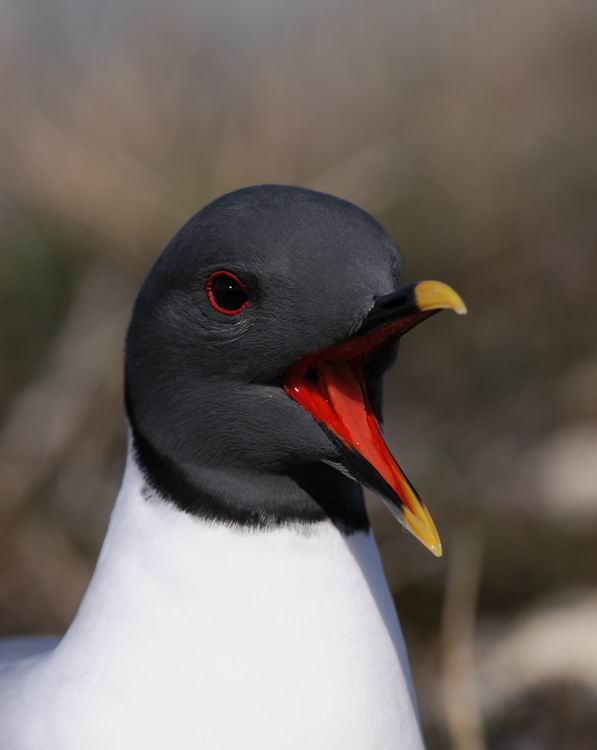
Sabine's Gull
Photo: Mike McEvoy
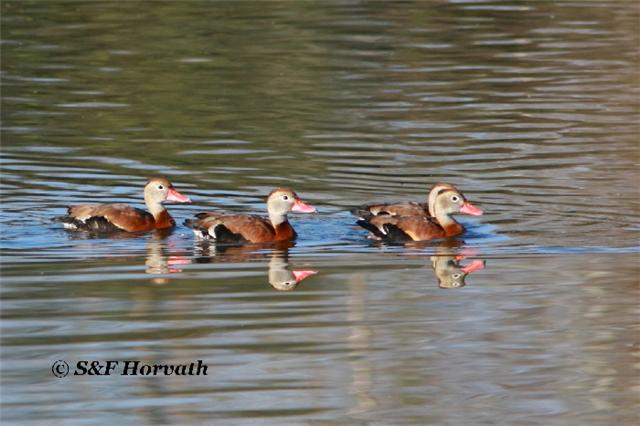
Black-bellied Whistling-Duck
Photo: Sandra and Frank Horvath

Ruddy Duck
Photo: Sandra and Frank Horvath
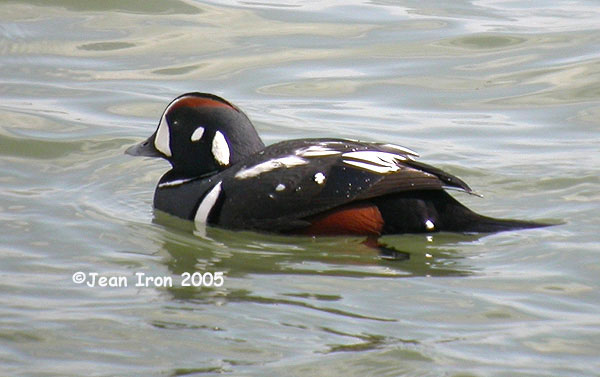
Harlequin Duck
Photo: Jean Iron
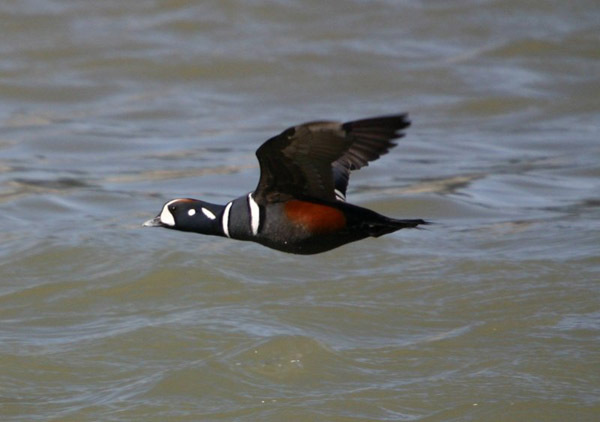
Harlequin Duck
Photo: Ian Stanley
October 26 2025 (Sunday) Hawk Cliff
Leader: Pete Read.
It was a lovely albeit chilly (1C) morning as I headed towards Hawk Cliff, just outside of St. Thomas. The frost was heavy on the ground, but the sun was peaking on the horizon. With light winds from the northeast, conditions seemed favourable for watching hawks and late fall migrants next to the cliff. These kinds of winds move the birds closer to the cliff for better viewing. The drive down the hill started with a lovely surprise, a group of Cedar Waxwings in the bush. We gathered with 30 OFO members on the platform, and several other groups of people and learned about the past week sightings from hawk watchers at the station, especially Dave Brown. He also indicated the strategic areas that the watchers would call out such as the ?slope?, a spot where the forest trees drop in height dramatically. For example, calls such as ?TVs in the slope? got us looking in the right place. There were other directional spots like ?Maple Tree?, ?Flicker tree?, ?dead elm? and ?the gap?, all used to give us the general direction of where certain birds were soaring above. You also had to know which species they were referring to like ?TV, shin, Coop,? and other endearing terms. We were treated to close flyovers of Golden Eagle fairly soon, with 4 being seen by the group. We were also spoiled by multiple mixed flocks with Turkey vultures flying over, with Sharp Shinned and Red Tailed Hawks finding thermals to ride over our heads. There was an early appearance of American Goshawk which flew low over the parking lot. Several Rough Legged and Red Shouldered Hawks as well as a few Cooper's Hawks thrown in for good measure were seen by all. A couple of late moving Broadwings surprised the Hawk Counters and the crowds. While many great soaring sightings made us open our mouths with awe, we quickly shut our mouths as the air warmed to 12 C, which uplifted thousands of midges to swarm around us! Many passerines, especially blackbird species and crows streamed past us. Pete Read was our fearless leader and he took us for a walk through the Hawk Cliff Woods after lunch when things calmed down a bit, as did the wind. We saw many Golden and Ruby Crowned Kinglets, many Yellow Rumped Warblers, and as well as Downy, Hairy and Red Bellied Woodpeckers and a Yellow-bellied Sapsucker. One group located a Fox Sparrow, and many White-throated Sparrows were noted. Pete gave us expert descriptions of the plant life, especially the glorious trees! We saw a snoozing racoon. No falcons were spotted today. After we returned, Pete was chatting with a local visitor who had spotted a Northern Saw Whet Owl in the woods. Pete made sure of the sighting and potential threat to the bird of having a surge of visitors and then spread the word and encouraged people to go carefully up in trail in small groups to take a quick peek and long distance photo of this sweet bird. It didn't seem disturbed at all. All in all it was a great sunny cool fall birding day, with almost 50 species seen and our two main targets, Golden Eagle, and American Goshawk were both achieved. And it is always good to see familiar as well as new faces! Thank you to Dave Brown, Tom Bolohan and the other official Hawk Counters for being such gracious hosts as there were at least 3 groups and many drop ins there! Pete and these experts used their experience to quickly identify approaching hawks and let us know where to look for them, as well as give us clues as to the features of the more challenging IDs. Eva D'Amico, Pete Read
October 22 2023 (Sunday) Hawk Cliff
Leader: Dave Brown.
OFO Hawk Cliff Hawk Watch Outing The OFO group arrived not too long after we got the Hawk Cliff Hawk Watch going for the day on Sunday and we were also joined by a pile of other visitors as well. Many in the OFO group and several of the other visitors had never been to a hawk watch before so it was great that they got such an amazing day to enjoy for their first time! Having all these folks there provided lots of eyes to scan the skies for birds and help out the official counters. Sunday was a near perfect day for hawk watching with a good mix of sun and cloud with much dryer air. The temps were pretty cool to start at 5C and only got to a high of 8C where it remained steady. The key to the great flight today was the strong winds from the NNW and NW for the entire day which really helped push the birds down to the lake shore. The result was an awesome flight as the birds took full advantage of the passage of a cold front and made a break for warmer climes. The total birds tallied for the day was 3,812 with the highlights being some very low and photogenic Golden Eagles (15) just above tree top level and right out in front of us! We made sure everyone got on at least a couple of these eagles as the group was very excited to see them so close. We also had our first American Goshawks (4) of the season that also passed through very low though I?m not sure if everyone got a look at them as they sped through pretty quickly. For Sunday?s count we recorded 14 of our typical 15 species that migrate through Hawk Cliff only missing out on Osprey! Not too shabby. The Sharpies (723) were putting on a real show as they came through in nearly a constant stream and often barely right over all the observers heads. This was one of the better Sharpie migration counts in a long time with many of these birds being adults at this point in the season. Cooper's Hawks (44) were starting to push through along with good numbers once again of Red-shouldered (35) and Red-tailed (282) Hawks. We also had some nice looks at Northern Harriers (47) and Rough-legged Hawks (7) with one dark morph Rough-legged Hawk that came right in over us just above tree top level. Rounding out the buteos were a couple of late Broadwings. For the falcons we had a good count of Am Kestrels (89) and Merlins (14) and then Peregrines (3) that all came through VERY low and fast providing some great looks and photo opps! All in all one of the better flights of raptors I've seen in bit and I think totally enjoyed by the OFO crew and all of the other visitors alike. Dave Brown
October 24 2021 (Sunday) Hawk Cliff
Leader: Dave Brown.
Hawk Cliff Field Trip - October 24, 2021 Dave Brown writes : I was pleased to host the OFO outing to the Hawk Cliff Hawk Watch today though it was limited to 20 participants due to Covid procedures. There were a few other visitors to the site today as well to join in the fun. The raptor flight was VERY SLOW getting started today with just 13 birds in the first 3 hours and ZERO birds in hour 2. With it being the OFO outing today I was worried we were never going to see the raptors get going. However, about mid-morning we started to see TVs and some buteos moving just to our north and then I spotted a very low young Golden Eagle that crossed through north of the ravine. In the interest of ensuring the OFO folks had birds to look at I had the entire group hop in their cars and head a few hundred metres up the road to what we call the "B&B" location. As soon as we exited the cars we spotted some nice kettles of TVs and buteos right out in front of us above the field on the east side of Fairview Rd. The flight continued to improve and the birds went a bit north again so everyone hopped in their cars once more and drove north and east a little bit till we ended about 100m north of Roberts Line which put us just north of the main flight line and again we got some great Golden Eagles along with lots of Redtails and Red-shouldered Hawks. For the last hour we then went back around the half km back to the B&B location and finished there as the rain started. The total raptors for the day was 1,494 with lots of TVs(1,291) along with good numbers of Redtails(103) and Red-shoulders(36). Our final tally of Golden Eagles was 11 with 8 of them either juvenile / immature looking birds (with white that varied from extensive to almost non-existent) and 3 of them that appeared to be either sub-adult / adult looking birds. Luckily, everyone in the OFO group got to see at least two or three Golden Eagles fairly well and for a few of the folks there today it was a species they'd never seen before. Other birders in the group had also never had a Red-shouldered Hawk before either so there were some pretty happy birders! While the raptor movement early was slow there were passerines everywhere in the shrubs right behind where we were sitting at the "Sharpie Alley" spot. A couple of nice surprises for the day were a young Chestnut-sided Warbler which was photographed and an adult female Black-throated Blue Warbler. There were lots of other non-raptors as well with White-throated Sparrows, American Robins, American Goldfinch, American Crows, Carolina Wrens, Black-capped Chickadees, Red-breasted and White-breasted Nuthatches, many huge flocks of Common Grackles and Red-winged Blackbirds, European Starlings, Purple Finches, Eastern Bluebirds, a single Double-crested Cormorant, Blue Jays, N. Flickers, Downy, Hairy and Red-bellied Woodpeckers, Yellow-rumped Warblers, Hermit Thrushes, Eastern Phoebe, Mourning Doves, N. Cardinals, Eastern Towhee, Gray Catbird, Cedar Waxwings, Chipping Sparrow and Canada Geese. A nice highlight for the end of the day was a flight of 10 Sandhill Cranes that came low at us from the west then circled up and headed NW before turning east again and passing over us once more but easily twice the height they were on the first pass. We had great views of this flock both times. All in all not a bad day at the hawk watch and a big thanks to the OFO group and other visitors for making the day a lot of fun. Reported by Dave Brown
May 22 2017 (Monday) Hawk Cliff Woods and Port Stanley area. A joint Thames Talbot Land Trust (TTLT) and OFO event.
Leader: Ellen Smout.
This morning 4 people joined myself and Rebecca Launchbury for a walk in the Talbot Land Trust property at Hawk Cliff Woods. Highlights included Philadelphia and Red-eye Vireo, a pair of Scarlet Tanagers, Magnolia Warblers and flocks of Tree and Bank Swallows. The entertainment of the day was provided by an Ermine carrying her babies one by one across the road! Crazy fun watching her. Last estimate I heard was 9 trips across the road!! After the Cliff we went over to the Port Stanley Lagoons where we found the 2nd lagoon with low water and lots of shoreline and shorebirds. At the harbour we had 18 Black-bellied Plover on the breakwater which was a nice surprise. Thank you to Rebecca for joining us. It was interesting to hear about the work the Trust has been doing and has planned for this beautiful woods. We appreciate the opportunity to partner with the Trust. Thanks also to Mike Vermue for tallying the lists in eBird. 3 lists have been posted for the 3 separate locations we birdied. As always, thanks to those who joined the walk, the company and the morning of birding was really fun.
November 1 2014 (Saturday) Hawk Cliff and Area, South-west of London
Leader: Pete Read, Ian Platt.
Today's trip to Hawk Cliff was highlighted by an excellent flight of Golden Eagles. We ended up with around 25 individuals (many of which provided excellent looks), with most of the birds in the afternoon. Aside from the Golden Eagles, the hawk flight was great, with quite a few Red-shouldered, a late Osprey, a few Rough-legged and some Bald Eagles among good numbers of the more common species. Passerine visible migration was very evident today as well, with lots of blackbirds, Eastern Bluebirds, American Pipits, Robins and a few Pine Siskins. We also visited the Port Stanley harbour, where the highlights were a Little Gull, a few late Common Tern, Snow Buntings and a couple Sanderling. The Port Stanley Sewage Lagoons had a good mixture of waterfowl, although nothing of note.
November 2 2013 (Saturday) Hawk Cliff and Area, South-west of London
Leader: Pete Read, Ian Platt.
Today's trip to Hawk Cliff didn't produce many migrant hawks, due to nearly constant rain. However, we still managed to see some good birds, highlighted by a Baird's Sandpiper at Port Stanley Lagoons, a Greater White-fronted Goose on the beach at Port Stanley and a Red-necked Phalarope at Aylmer Sewage Lagoons.
A good selection of non-raptors was around, including lots of Eastern Bluebirds at Hawk Cliff, two adult Bald Eagles at Port Stanley and a good selection of waterfowl at both Port Stanley and Aylmer Sewage Lagoons.
Hawk Cliff and Other Hawk Watch LocationsTop
November 5 2011 (Saturday) Hawk Cliff & Area, southwest of London
Leaders: Pete Read, Ian Platt.
Just over 20 birders attended the OFO trip to Hawk Cliff today. There were good numbers of raptors moving at Hawk Cliff throughout the morning, highlighted by 10 Golden and 1 Bald Eagles, 1 Rough‐legged Hawk and several Red‐shouldered Hawks among large numbers of Red‐tailed Hawks and smaller numbers of other species. There were very few birds around on the ground (best were a Fox Sparrow and a Purple Finch, unfortunately not seen by most of the group), but large numbers of birds overhead with 1000s of blackbirds (including at least 200 Rusty Blackbirds), many Pine Siskins and several hundred Tundra Swans.
After Hawk Cliff, we visited Port Stanley, where there were many gulls around, although nothing more exciting than a few Great Black‐backed Gulls. On the beach were 4 Sanderling and a flock of Snow Buntings.
We finished off the day at Port Stanley Sewage Lagoons, where we located 5 species of shorebird (Dunlin, Pectoral Sandpiper, Greater Yellowlegs, Killdeer and 1 Long‐billed Dowitcher) amongst the numerous waterfowl and Bonaparte’s Gulls.
The species total for the day was 72 species.
November 6 2010 (Saturday) Hawk Cliff and Area, southwest of London
Leaders: Pete Read, Ian Platt.
Ian and I met about 10 hardy birders on a rather cool Saturday morning at Hawk Cliff for late migrating raptors and other sightings.
As the movements of hawks began rather late we didn’t leave the cliff until about 2 pm, but by that point we had seen our target species. Included were 5 Golden Eagles, 4 of which were immature, some at good viewing distance, and 3 Northern Goshawks, 2 of which were immature, at high altitude unfortunately, and a dozen or more Red‐shouldered Hawks of various age, one particularly close bird.
Many Red‐tails were moving today as well as a few Harrier, Cooper’s and Sharp‐shinned. A number of Turkey Vultures were noted and three Bald Eagles put in an appearance. I think a few saw a Roughleg or two, and one was captured and banded I heard.
We had started about half way up the Hawk Cliff road, as we noted the wind was out of the north, but not too stiff, and the official Hawk Cliff counters had moved up there. Reports of some movement came in from north of Dexter Line, so we drove up there. Yes, a few started moving through about 11 am, but since the wind came up even more, we noted that the small kettles forming were indeed being pushed towards the lake so by 12:30 we moved back to the original spot. Just after 1, after noting quite a few red‐tails and other species, the eagles started appearing. We left about 2 pm in order to get the next two places covered.
Besides the raptors, a number of passerine species were noted at the Cliff. We had at least two Fox Sparrow, a Tufted Titmouse, a number of White‐throated Sparrow, several Eastern Bluebird, Cedar Waxwing, one Golden‐crowned Kinglet only, three Wood Duck, and a number of others.
Flicker, Hairy, Downy, and Red‐bellied Woodpeckers were found there and one couple had a Pileated as they approached Hawk Cliff.
I should mention that another person had a few swans, probably Tundra, on the way. I saw a number of Wild Turkey on my way home.
Following the lake, presumably migrating were numbers of American Pipit, 100 or so, in one large flock. Also moving today, goldfinch and bluebirds and some blackbird species
A few Common Loon were seen coming from the north, amounting to about 9.
We headed over to the Port Stanley Harbour where a large number of common species of gulls, ring‐bill and herring, were loafing. A few Great Black‐backed were also noted. A lone Dunlin was hanging around. A Bald Eagle was seen over the town.
We then headed up to the sewage lagoons, where a number of waterfowl were seen. These included Northern Shoveller, Green‐winged Teal, Ruddy Duck, American Wigeon, Ring‐necked Duck, one female scaup, a few Redhead, Hooded Merganser, Mallard, and Bufflehead.
A few Bonaparte’s Gulls were noted as well.
From there the group dissolved and headed off.
Altogether we saw about 40 species of birds.
Thanks to all of those who came out and enjoyed looks at our target species. The weather held out quite well, wind being mostly out of the north pushing the birds towards the lake for viewing fun. There was a variety of clouds but with some sunshine, so that many birds were seen in excellent light.
A big thank you to all the official Hawk Cliff counters who helped us immensely during our time at the Cliff. We really appreciate your advice and help.
7 November 2009 Hawk Cliff and Area, South‐west of London
Leaders: Pete Read, Ian Platt.
Some 15 OFO members enjoyed a mostly sunny but blustery day. Standing at Hawk Cliff in the brisk southwest winds proved fruitful only that we saw an adult Golden Eagle at close range just over the treetops above us, as it coursed along tacking into the wind. The only other hawks we saw in the “wrong” wind, were a Red‐tailed Hawk, a Cooper’s Hawk, and a Sharp‐shinned Hawk. Few migrants were going along the cliff today, nor in the woods. We did see a hungry Red‐bellied Woodpecker eating apples on a wild apple tree.
The official hawk counters at Hawk Cliff had abandoned that spot and headed inland as they usually do on a south wind. We ended up at the so‐called Sparta Ridge, where we saw a few Red‐tailed Hawks using the updrafts there. Bailing on such a slow morning of hawk watching, we headed over to Port Stanley Harbour where we ate at Mackies Restaurant and looked at the gulls on the break‐wall. On the way there, the leaders grabbed a quick view of a Northern Goshawk, but being in cars, the trailing vehicles missed the bird. In the Harbour, a Double‐crested Cormorant was seen but the best birds were two adult Lesser Black‐backed Gulls.
On we went to the Port Stanley Sewage Lagoons, where we saw a dozen species of waterfowl including Tundra Swan, Northern Shoveller, Common American Coot, and a Horned Grebe. Also noted were about 5 Dunlin and 3 Killdeer.
We decided that since most of our group lived east of there, we would head over to Aylmer on highway 73, where we visited the Aylmer Sewage Lagoons and the Aylmer Wildlife Management Area. At the former location we found a lot of waterfowl including a couple of Blue‐winged Teal, and many Bonaparte’s Gulls and amongst them one Little Gull.
Our final stop was at the Aylmer Wildlife Management Area, but nothing new was added there. We had a group total of 55 species recorded, some on our way to and from the trip, and we thank those who turned out and helped make it a successful day.
25 October 2008 Hawk Cliff and Area, South‐west of London
Leaders: Pete Read, Ian Platt.
About 10 birders took part in our annual trek to Hawk Cliff hoping for a sighting of the elusive Golden Eagle, and some of the other late October raptor migrants. We even had two people show up from St. Louis, Missouri, though they claim that they were just there because of hearing about Hawk Cliff online, and not to take part in the OFO trip.
Unfortunately the weather didn't co‐operate and we had one of the slowest days I have ever experienced for migrants at Hawk Cliff. We had only one each of Cooper’s Hawk and Red‐tailed Hawk, and an immature Bald Eagle, the latter two most likely being locals. Add to that the smaller birds such as grackle and Red‐winged Blackbird and a few jays, and it was indeed slow. The somewhat gusty winds were out of the south, and the sky ranged from overcast with a low ceiling to sunny with a high ceiling.
That was the bad news, but there was a lot of good news. As we arrived, all sorts of migrants that had arrived the night before were eagerly feeding along the roadside. There was a huge crop of food, including wild grape, floribunda rose, lots of seeds, which scads of American Robins, waxwings, the bluebirds and sparrows were eating. Insects were plentiful, and so were many kinglets, and tons of Yellow‐rumped Warblers. One of our favourite sightings was the immature Bald Eagle coursing by the cliff at head height. Another was the Fox Sparrow getting grit off the road and chasing the Juncos about. It took until just after 11 a.m. for us to realize that the migration watch was going to be a bust. On we went to Mackies in Port Stanley Harbour. After refreshing ourselves with their patented orangeade and wolfing down some sinful fries, we scouted the gulls out on the beach and break wall. Why do people so enjoy disturbing the resting gulls on the beach?
Amongst the many gulls on the pier, Gavin spotted a Lesser Black‐backed Gull. The wind was stiff out of the south, so it was difficult to see any ducks out in the water over the heavy waves. So we headed up to the Port Stanley sewage lagoons, which have two nice blinds overlooking four ponds. The first two held a number of duck species and lots of Bonaparte Gulls, but the second two helped bring out total bird species higher, as they had mud flats. We saw a few shorebirds, including a Pectoral Sandpiper.
The 67 species seen are listed below with the approximate numbers seen.
Canada Goose 100+, Wood Duck 1, American Black Duck 6, Mallard 10, Northern Shoveller 20, Northern Pintail 2, Green‐winged Teal 10, Redhead 2, Lesser Scaup 5, Bufflehead 5, Common Merganser 10+, Red‐breasted Merganser 50+, Ruddy Duck 50+, Wild Turkey 10, Turkey Vulture 10+, Bald Eagle 1, Sharp‐shinned Hawk 1, Cooper’s Hawk 2, Red‐tailed Hawk 2, American Kestrel 1, Killdeer 1, Pectoral Sandpiper 1, Dunlin 5, Wilson's Snipe 2, Bonaparte's Gull 100+, Ring‐billed Gull 50+, Herring Gull 100+, Lesser Black‐backed Gull 1, Great Black‐backed Gull 10+, Rock Pigeon 40+, Mourning Dove 5, Downy Woodpecker 2, Hairy Woodpecker 1, Northern Flicker 1, Blue‐headed Vireo, Blue Jay 10+, American Crow 8+, Horned Lark 1, Black‐capped Chickadee 5+, Red‐breasted Nuthatch 1, Winter Wren 1, Golden‐crowned Kinglet 5+, Ruby‐crowned Kinglet 50+, Eastern Bluebird 12, Hermit Thrush 1, American Robin 50+, European Starling 100+, American Pipit 2, Cedar Waxwing 25, Yellow‐rumped Warbler 50+, Eastern Towhee 2, Field Sparrow 2, Fox Sparrow 1, Song Sparrow 10, Swamp Sparrow 3, White‐throated Sparrow 50+, White‐crowned Sparrow 2, Dark‐eyed Junco 10+, Northern Cardinal 2, Red‐winged Blackbird 1, Common Grackle 1, Brown‐headed Cowbird 50, Purple Finch 3, House Finch 12, Pine Siskin 8, American Goldfinch 10+, House Sparrow 20+.
Reported by Pete Read
14 October 2006 Hawk Cliff and Area
I, Pete Read, and Ian Platt were pleased to host about 20 migration watchers from here and far. Things were hopping, er flapping, at Hawk Cliff. There were tonnes of migrants flying past, besides our raptor hopefuls, including many thousands of blackbirds (I stopped counting after 10 000), also hundreds of American Robins, Cedar Waxwings, American Pipits, Blue Jays, American Crows, Tree Swallows, and multitudes of other passerines, mainly Yellow‐rumped Warblers, Eastern Bluebirds, Hermit Thrushes, Golden‐crowned and Ruby‐crowned Kinglets, White‐throated and White‐crowned Sparrows, Winter Wren, and Yellow‐bellied Sapsucker, and more. Five Common Loons flew in from the north and a half dozen Northern Flickers, a Barn Swallow with Tree Swallows and a Greater Yellowlegs flew past. We had singles of Nashville and Palm Warblers, and Blue‐headed Vireo.
The hawk totals for our 3 hours at the Cliff included 12 Northern Harrier, 4 Cooper’s Hawks, 3 American Kestrels, 2 Merlins, 5 Bald Eagles, and about 175 Sharp‐shinned Hawks. One Northern Goshawk was reported by the official Hawk Cliff counting team, but we missed it. One of our group saw a Red‐tailed Hawk and another saw a young Peregrine Falcon as they approached Hawk Cliff. No sign of our mowraps (most wanted raptors), Red‐shouldered Hawk and Golden Eagle. We had a couple of Turkey Vultures, and saw more as we drove on nearby roads to other locations inland.
We headed off to Port Stanley and Mackie’s Restaurant. The report of a Sabine’s Gull this week had us hoping. We found some good birds on the beach. Besides the begging Ring‐billed Gulls and a few Herring Gulls, there was an adult Lesser Black‐backed Gull on the breakwall. Two Red‐necked Phalaropes bobbed in the surf near the rocky point, and came onshore to the flotsam puddles on the beach to stir up stuff with several Sanderlings, a Dunlin and a Semipalmated Plover.
Then, we went to the Port Stanley sewage lagoons where we saw hundreds of Ruddy Ducks and Bonaparte’s Gulls. Also in the mix were a good number of American Coots and Northern Shovelers. We also noted a few each of Blue‐winged Teal, Gadwall, American Wigeon, Wood Duck, Hooded Merganser, Mallards and Pied‐billed Grebe. We saw Song, Swamp and White‐crowned Sparrows and a late Savannah Sparrow. Up popped a Sora, not once but several times, ensuring that we all got a look. A Marsh Wren also made a quick appearance, though just a few saw it. Most of us headed home at this point. Only a few went home via Fingal Wildlife Area where the only extra species was a Mute Swan.
Our total was 78 species seen by one or more of the participants. We were glad the rain was only in widely scattered light mistings. Interestingly, a lot of the hawks and migrants flew on this fairly strong southern wind, and they were fairly close to the lake.
Reported and led by Pete Read and Ian Platt.
22 October 2005 Hawk Cliff and Area, Southwest of London
Leaders: Pete Read, Ian Platt, and Gavin Platt.
We had a good mix of birds flying by at the Cliff aided by a strong Northeast wind. Good for birds but a bit chilly for mortals. Apparently a much stronger flight happened on the previous day, but we had a good and varied migration. We remained at the Cliff from 9:30 to just after noon and there were still birds moving through after we left. We saw dozens of Cooper's and Sharp-shinned Hawks, Red-tailed Hawks, a good number of Turkey Vultures, some six or so Bald Eagles, six Red-shouldered Hawk, two Rough-legged Hawks, a half dozen Northern Harriers (including at least two late males), singles of Northern Goshawk, Merlin, Kestrel. We missed Golden Eagle.
Non-raptors included large numbers of American Crow, and various blackbirds. Yellow-rumped Warblers and White-throated Sparrows were very abundant. Also seen in the woods along the road were Hermit Thrush, and a Pine Warbler. We noted about six loons coming from the northwest, and dropping towards the lake. Several large flocks of mergansers flew by, as well as a large group of scaup. We continued to Port Stanley, picking up a Peregrine as it flashed past. Gulls in the harbour included the usual and a few Great Black-backed and Bonaparte's Gulls. Two more Bald Eagles passed by as we ate Mackie orange-aid, and fries. There was a good movement along the lake of Red-breasted Mergansers.
Later, at Port Stanley, we dropped in to Joe Hurst's place for Purple Finch, Carolina Wren, and a Blue-headed Vireo.
Up at the sewage lagoons, north of town, we hit the species bonanza. The lagoons had many species of waterfowl, including a few Gadwall, Northern Pintail, American Widgeon, and Green-winged Teal, and many Ruddy Duck. Lots of Mallards and Northern Shovelers were present. Also noted were Bufflehead, and a pair of Hooded Merganser. A few Lesser Scaup and a Redhead were also seen there. We had several shorebirds besides Killdeer, including Dunlin, Pectoral Sandpiper and at least four Wilson's Snipe.
A total of 76 species were noted by our participants.
Directions: Port Stanley is located on Lake Erie, at the south end of County Rd 4, south of St. Thomas. Hawk Cliff, is located off Dexter Drive (County Rd 24), about 3 km east of Port Stanley. Turn south onto Hawk Cliff Drive and park at the end of the road. Watch out, the cliff is steep and the edge of the cliff is a bit crumbly. Watch for migrating hawks flying across the road from east to west, anywhere along the road, depending on the wind conditions, but mostly in the last half km. Joe Hurst's home is on Lake Line, up the hill from road 20 in Port Stanley. Stop along the side of the road. You can watch for feeder species, coming to visit his vast array of feeders. For the sewage lagoons, continue west up the hill from there, on Lake Line, and turn right onto Scotch Line. The lagoons are about a kilometre along Scotch Line, just after it turns to the west. There are two viewing towers.
Reported by Pete Read
23 October 2004 Hawk Cliff and Area, Southwest of London
Leaders: Pete Read and Ian Platt.
Weather ranged from partly sunny to overcast, but the constant was the strong southeast winds. Temperature seemed to be in the single digits, but we felt colder due to wind chill.
Highlights at Hawk Cliff included the flight itself, with many hundreds of crows, jays and blackbirds, and a dabbling of other migrants such as American Pipits, American Goldfinches and American Robin (some Canadian birds such as Canada Goose were spotted later). An immature Bald Eagle flew by earlier than most people had arrived, but a Peregrine Falcon coursed along the edge of the cliff after most of the 20 or so people had gotten there. One Merlin was spotted streaking by, and 20 or so Sharp-shinned Hawks along with a few Cooper Hawks winged westward over the three or so hours we were there. Several Common Loons flew over, heading into the winds. It was a good day for Turkey Vulture. Our best bird of the day was Brant, two of which flew right over us and landed in a field to the east, just out of sight. We added several species in the woods, including Eastern Bluebird, Pine Siskin, and Hermit Thrush, and several at the beach such as Great Black-backed Gull, at Port Stanley.
At the sewage lagoons, we were able to add many waterfowl, including both scaups, Green-winged and Blue-winged Teal, Northern Shoveler, Hooded Merganser, and lots more. Several species of shorebird lingered including Dunlin, Pectoral Sandpiper, Greater and Lesser Yellowlegs. And a quite late Semipalmated Sandpiper was present. A few of our trip members scouted the lagoons and saw four dowitchers, but not sure which species (Long-billed more likely at this time?) Our list about totaled 68.
Reported by Pete Read
25 October 2003 Hawk Cliff and Area, Southwest of London
Leaders: Pete Read and Ian Platt.
Some 14 people came out to our Hawk Cliff/Port Stanley OFO outing. We braved the early morning damp conditions and southerly flow of winds (not necessarily good for hawks). Not only did the weather become increasingly tolerable, but also we were rewarded with some 63 species of birds, some at the Cliff, some in Port Stanley, and some at the Port Stanley Sewage Lagoons. Of note, besides the lack of hawks, was the sighting of a late migrant Cape May Warbler, and Tufted Titmouse, both at the Cliff. We had 15 species of waterfowl and 3 shorebirds at the Port Stanley Sewage Lagoons, including a Least Sandpiper.
Some of the other birds our group reported: Sharp-shinned Hawk-2 or 3, Coopers Hawk-1 or 2 Red-tailed Hawk-2 or 3, Bald Eagle- 2 adults, one immature Virginia Rail (found dead), Bonapartes Gull-30+ at lagoons, Red-bellied Woodpecker White-breasted Nuthatch, Brown Creeper, Ruby-crowned Kinglet ,Golden-crowned Kinglet ,Hermit Thrush, American Pipit (10 +), Eastern Towhee, Fox Sparrow, Snow Bunting (11 at harbour), Purple Finch.
Some parties reported a few other species in transit, on the way to or from the outing - including American Kestrel, 2 Eastern Meadowlarks, and Ring-necked Duck. (not in group total).
Reported by Pete Read
26 October 2002 Hawk Cliff and Area, Southwest of London
Leaders: Pete Read and Ian Platt.
As we assembled at Hawk Cliff, the cloud ceiling was low and only a few wisps of wind were evident - not good if you are hoping for hawks. After looking for local migrating small passerines, we headed over to Port Stanley Harbour and then to the Port Stanley Sewage Lagoons. By then it had brightened up and a northwesterly wind encouraged us to return to the cliff where we ended our wanderings. As we stood around in eager anticipation, the clouds thickened and we found ourselves once again standing in cool overcast conditions. In fact, very few raptors were moving today. We noted only a dozen Sharp-shinned Hawks, a couple of American Kestrels, a single Red-shouldered Hawk, a few Red-tailed Hawks and less than 10 Turkey Vultures.
At the cliff, we found lots of Ruby-crowned Kinglets, a few Golden-crowned, some Yellow-rumped Warblers, Winter Wren, and lots of White-throated Sparrows, a few Song Sparrows and Dark-eyed Juncos, an American Tree Sparrow, and a Fox Sparrow. Singles were also noted for Red-bellied Woodpecker and Blue-headed Vireo. A couple of American Golden Plovers flew out over the lake. A number of flocks of American Pipit and Horned Larks passed. As well, a flock of Rusty Blackbirds was noted (a few were at the lagoons also). At the Port Stanley harbour, a Horned Grebe and a couple of Common Loons were out and about. Quite far out, a good number of Red-breasted Mergansers were flying. The local Ring-billed and Herring Gull flocks included many Bonapartes (even more at the lagoons) and a few Great Black-backed Gulls.
At Joe Hurst's home on the way to the lagoons, we stood stunned and wide-eyed as we caught quick looks at a White-eyed Vireo, while we watched for birds at his feeders. Ann White did some research and found that there was only one previous fall record in Elgin County - a bird banded at Hawk Cliff, 10 October 1955, by Marshall Field, John Lemon and Fred Lewis. So this bird was only the second seen in fall, and also was the county's record latest. It took 47 years to get the second fall sighting! We saw about 12 species of waterfowl at the lagoons including six Snow Geese, and we located two Wilson's Snipe and 2 Pectoral Sandpipers. Three late Tree Swallows were there also.
The group of about 25 birders started winging their way home shortly after 3. Probably most headed along the lake on their way, looking for a large dark bird that had eluded us today. At Port Bruce and Port Burwell there were Snow Buntings, Sanderlings, and Greater Yellowlegs. A quick trip to Big Creek Marsh at Long Point yielded lots of Tundra Swans, Wilson's Snipe and at least three Sandhill Cranes. Two of our group, Anne Anthony and Jerry Ball, headed to Blenheim and Lagoon Road near Rondeau Bay where they saw the Tropical Kingbird, but they were unsure of its identification at the time.
We ended up with 68 species for the day, quite good given the conditions.
Reported by Pete Read and Ian Platt
27 October 2001 Hawk Cliff and area, south of London
Led by Pete Read and Ian Platt.
About 28 birders took part in a very successful outing to Hawk Cliff on Lake Erie. The winds were out of the north-northwest. It was cold and overcast with occasional bits of frozen and liquid precipitation for much of the day, but spirits were high due to the number of birds seen. After days of southerly winds and much rain, the birds were eager to go, so it was a good day to watch them moving.
Thousands of blackbirds including American Crows, Red-winged Blackbirds, Common Grackles, European Starings, Rusty Blackbirds and Brown-headed Cowbirds migrated, as did many American Robins, American Pipits, Eastern Bluebirds, Pine Siskins, Purple Finches, and of course lots of hawks. We had 14 species of hawks including many Sharpies, Cooper's, Redtails, Turkey Vultures, and Northern Harriers. The highlights included 7+ juvenile Northern Goshawks, 3 immature Bald Eagles, a late Broad-winged Hawk, more than 15 Red-shouldered Hawks, a Rough-legged Hawk and finally around 2:30, a Golden Eagle. A Peregrine and a Merlin also passed the observers on the road. Most birds passed by just south of the first big gulley from the intersection entering Hawk Cliff. For exact numbers see the report by the Hawk Cliff observers sent out on an earlier posting.
Many passerines were noted along the road, perhaps one of the more interesting being a Philadelphia Vireo, seen by and surprising a few of our group. Better for viewing was a Saw-whet Owl, first found by the chickadees and nuthatches, and we had a Short-eared and a Long-eared Owl. A Palm Warbler, Field Sparrow and a couple of Fox Sparrows were also good. Several groups of Pine Siskins passed by as did a group Common Redpolls, and even a flock of about 40 Evening Grosbeaks.
After the Golden Eagle at about 2:30 p.m. we had over 72 species, and moved on to Port Stanley to pick up a few species including Great Black-backed Gull at the breakwall and Horned Grebe along the shore, as well as some french fries in town. We finished the trip at the Port Stanley lagoons where the Eared Grebe still resides in the 4th lagoon from the east. About 20 other species were present, including many ducks, Tundra Swans, Lesser and Greater Yellowlegs (yes Barb, I am sure it said Tu-Tu-Tu) and Dunlin. A great day with the final total being about 100 species.
It was said by the official hawkwatchers we met at Hawk Cliff that if the winds stay out of the north, more Golden Eagles could be by that location in the next few days.
Thank-you to all those who came out and enjoyed a day at the Cliff, and to those hawk-watchers who helped us locate and id the hawks.
Directions to Hawk Cliff: from St. Thomas, take Fairview Avenue south to stop sign, continue over Dexter line down gravel road at Hawkes Cliff Farm. Hawk Cliff viewing area is from the roadway only, unless gate is open on the east side of Hawk Cliff Road. Please respect the landowners either side of roadway and Do Not Trespass. Use extreme caution, if going to cliff edge, severely undercut.
Alternatively, take 401 to Highway 4, south to Union, which is south of St. Thomas, turn left and go one road to Fairview, turn right and continue south to the intersection with Dexter. Continue south onto gravel road at Hawkes Cliff Farm. The Port Stanley sewage lagoons: From the town of Port Stanley on Lake Erie, take Highway 4 west over the river, then go north on County Road 20. At the next stop sign, go left and up a large hill. This road is called Lake Road. At the top of the hill take a right onto Scotch Road and go 1.1 km to the lagoon complex on the left side of the road. Use the viewing tower overlooking 4th lagoon from east to see the Eared Grebe.
Reported by Pete Read
15 September 2001 Hawk Hill, High Park, Toronto
Hosted by Don Barnett and the Greater Toronto Hawk Watch
For a map of the park see Greater Toronto Hawk Watch
21 October 2000 Holiday Beach, Essex County
Led by Paul Pratt.
Ontario Field Ornithologists members gathered at the Holiday Beach Conservation Area, located along the shores of Lake Erie in the Town of Amherstburg, Essex County, on a clear fall morning. Birding leader Paul Pratt, City of Windsor's Ojibway Nature Centre's Naturalist, welcomed birders hoping for good sightings of raptors at this well known raptor migration location. Predictions of light winds from the northeast were perfect conditions to bring migrating birds of prey past the Conservation Area's hawk tower.
The day began with a Peregrine Falcon perched atop a dead tree on Eagle Island in Big Creek Marsh, with a second reported flying through. The 30-member group moved directly below the Holiday Beach hawk tower to view the fine congregation of waterfowl resting on Big Creek Marsh. These included a record number of Ruddy Ducks, and a few lingering herons. Overhead Sharp-shinned Hawks migrated west across Big Creek Marsh along with flocks of Blue Jays and American Crows. Flocks of American Goldfinch and Cedar Waxwings hurried westward, the usual flight direction at Holiday Beach. Hawk watcher Bob Hall-Brooks brought news of an Eastern Screech-Owl enjoying the warm sun on a broken poplar tree trunk. This comfortable perch had often been occupied by a rufous phase Eastern Screech-Owl during the 1999 fall migration. Oddly, the perch had remained empty this fall until Bob s fortuitous discovery.
While walking to the owl's roost, the group stopped to observe some of the season's first Dark-eyed Juncos foraging along a grassy parking lane, in the company of two Field Sparrows. The group set up telescopes on the grassy strip where the Festival of Hawks festival tent is usually located in September Telescopes gave a fine portrait view of a gray phase Eastern Screech-Owl which was fully alert, very much aware of the visitors. Kinglets called from the dogwood thickets behind while two Brown Creepers explored a poplar tree trunk in the woodlands.
Upon returning to the roadway beside the Trout Pond at 11:00 a.m., two Golden Eagles, an adult and an immature, were spotted over Big Creek Marsh. Participants were delighted with these sightings, anxiously scanning the skies for more Golden Eagles. Light northeast winds were indeed bringing good numbers of migrants by the hawk tower. Two kettles of Turkey Turkey Vultures were observed to the north, while Red-tailed Hawks, Sharp-shinned Hawks and straggling flocks of American Crows passed overhead. Sixty Turkey Vultures, dramatically dark against a deep blue sky, streamed over the hawk tower. The next Golden Eagle was seen at 11:20 a.m. This sighting was followed by good views of Red-shouldered Hawks, Red-tailed Hawks, and a Cooper's Hawk.
At 11:40 a.m., another three Golden Eagles were seen together, followed at 11:45 a.m. by four Golden Eagles passing overhead, one behind the other. An American Kestrel was noted at 11:50 a.m., followed at 11:54 a.m. by yet three more Golden Eagles. An adult male Northern Harrier was spotted soaring overhead with Red-tailed Hawks.
Excited birders exclaimed as an adult Bald Eagle soared low to the west of the hawk tower. More Turkey Vultures kettled over the tower as birders headed out for lunch. Some who lingered in the parking lot saw another Golden Eagle overhead.
After lunch, the group explored the Conservation Area's northern nature trail. A light phase Rough-legged Hawk was seen overhead flying east at 1:50 p.m., then another Golden Eagle was observed at 2:10 p.m heading west. Birders explored several pine plantations for roosting owls, one unknown owl species flushed from its roost in the pine plantation across from the Conservation Area on County Road 50.
Banders Dorothy and Gary Balkwill reported that their banding total for the day was six raptors, five Sharp-shinned Hawks and an American Kestrel. The raptors overhead were intent upon migrating, oblivious to the banders' set-up. At 12:30 p.m., the station lost one of its nets when a Golden Eagle dropped from a height of two hundred feet, flew through the net, then evaded a second net by passing under it. Banders reported hearing the mist net material snap as the Golden Eagle flew through the net.
Our thanks to Paul Pratt for sharing his expertise and knowledge of Holiday Beach Conservation Area. 21 October 2000 was a memorable day at Holiday Beach as thirty-five Golden Eagles were observed by tower hawk watchers, a new one day record for Golden Eagles seen at this site.
Compilation of the day's sightings were provided by participant Paul DesJardins.
Total Species - 76
Total Bird Species - 64
Total Butterfly Species 4
Cabbage White Butterfly, Pieris rapae - 2
Clouded (Common) Sulfur, Colias philodice -1
American Painted Lady, Vanessa virginiensis -1
Monarch, Danaus plexippus -1
Total Odonata Species - 4
Familiar Bluet, Enallagma civile - 1
Common Green Darner, Anax junius - 6
Yellow-legged Meadowhawk, Sympetrum vicinum - 7
Black Saddlebags, Tramea lacerata - 1
Total Beetle Species - 2
Box Elder Beetle - 2
Southern Lady Beetle, Harmonia axyridis - +300
Northern Brown Snake - Road Kill -1
Northern Leopard Frog - 1
Reported by Betty Learmouth
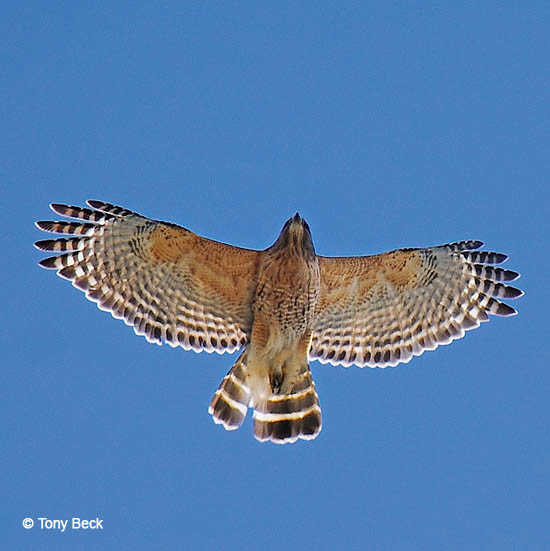
Red-shouldered Hawk
Photo: Tony Beck

Cooper's Hawk
Photo: Brandon Holden

Northern Hawk Owl
Photo: Brandon Holden
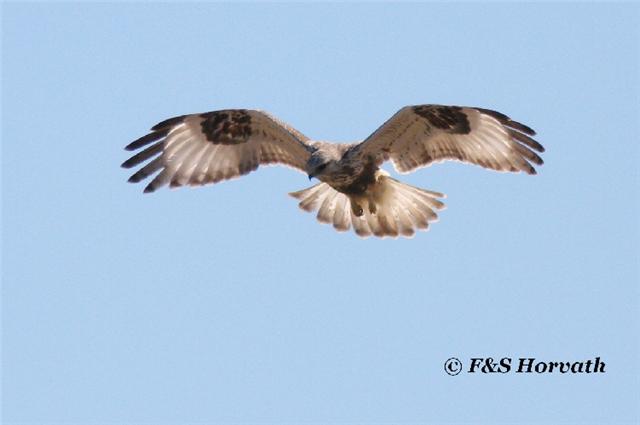
Rough-legged Hawk
Photo: Frank and Sandra Horvath
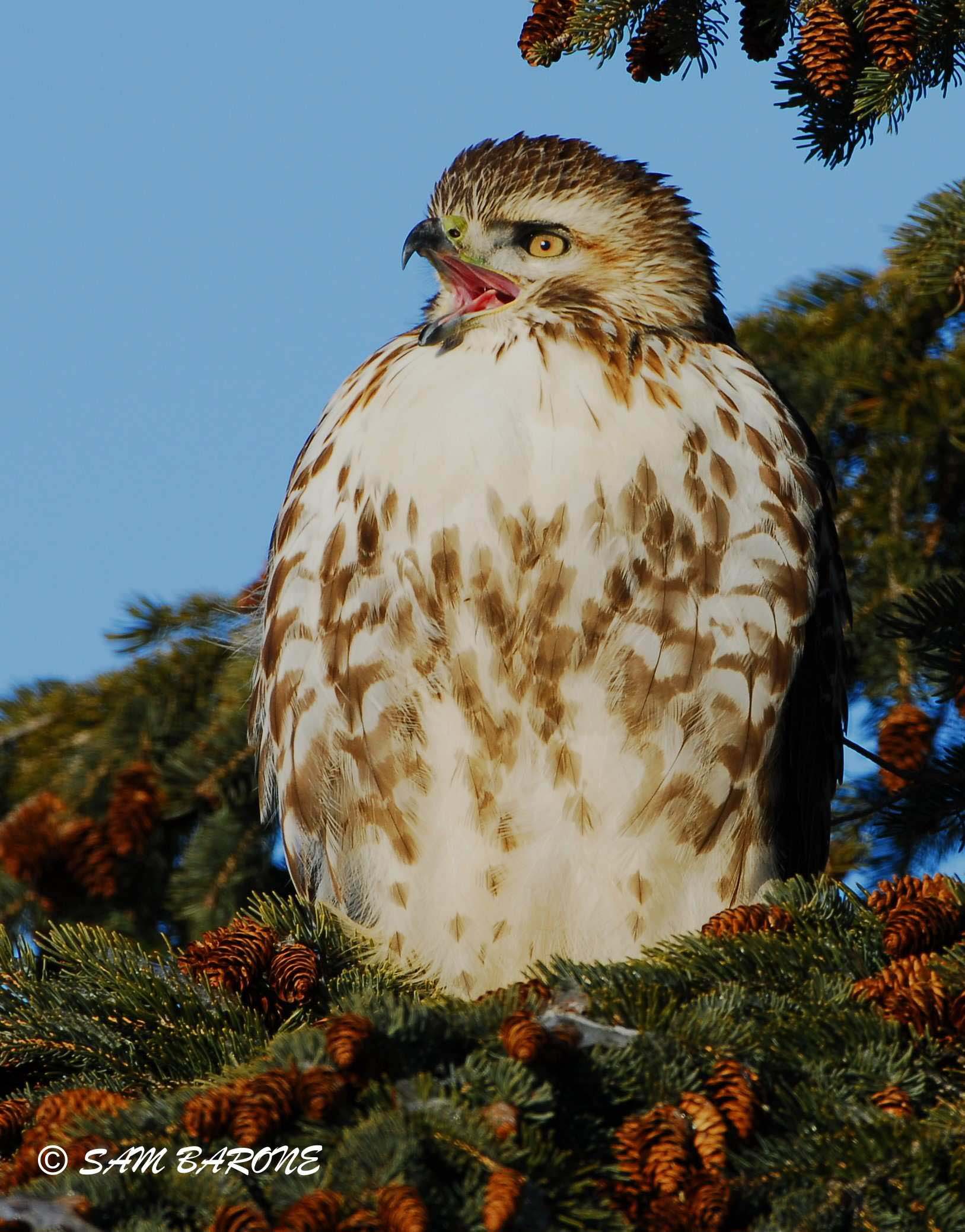
Red-tailed Hawk
Photo: Sam Barone
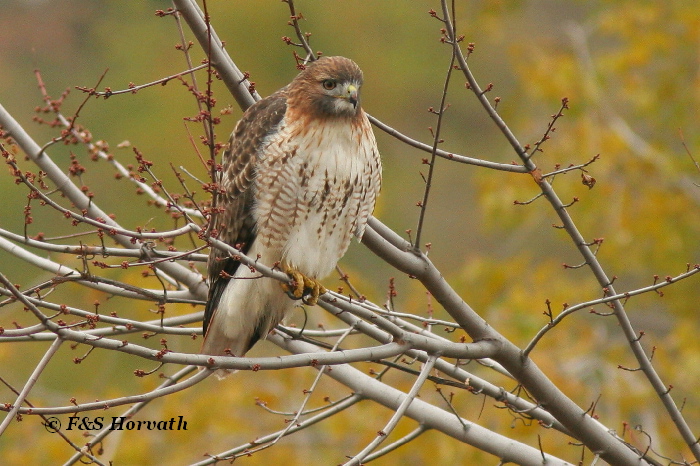
Red-tailed Hawk
Photo: Frank and Sandra Horvath
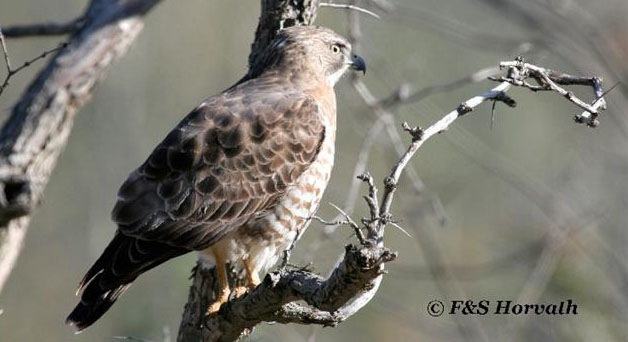
Broad-winged Hawk
Photo: Frank and Sandra Horvath
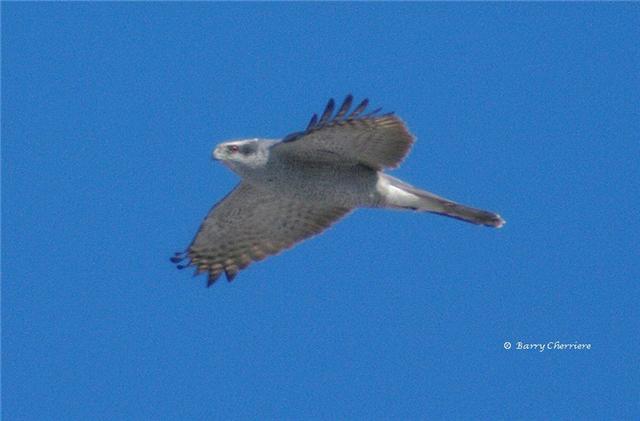
American Goshawk
Photo: Barry Cherriere

Broad-winged Hawk
Nestlings
Photo: Rick Lauzon
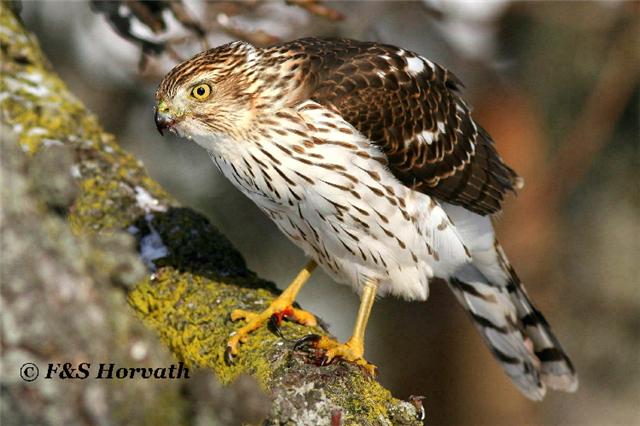
Cooper's Hawk
Immature
Photo: Frank and Sandra Horvath
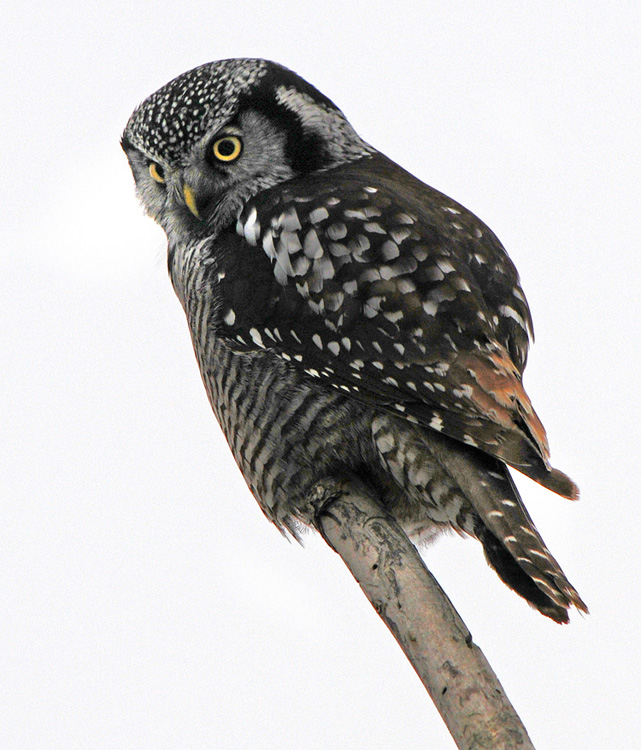
Northern Hawk Owl
Photo: Tim Foran
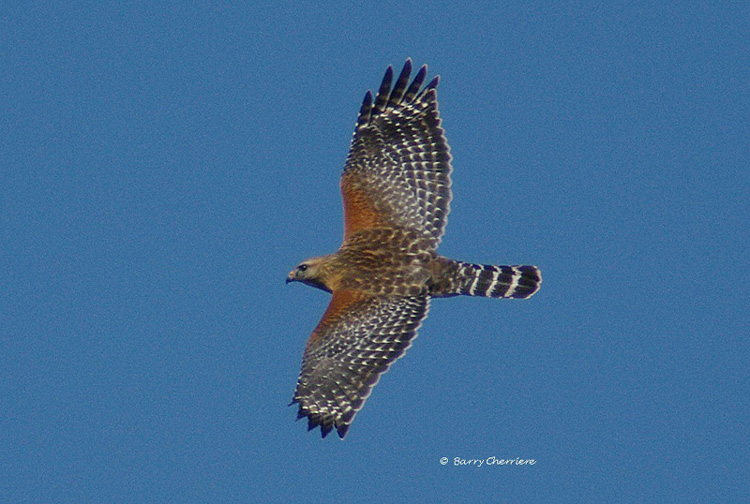
Red-shouldered Hawk
Photo: Barry Cherriere
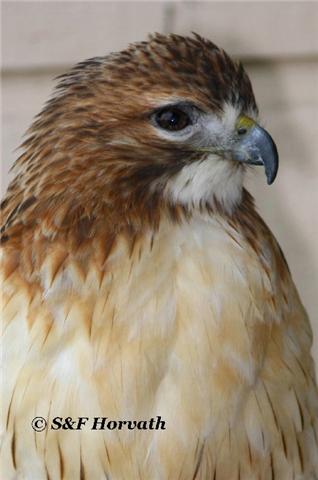
Red-tailed Hawk
Photo: Sandra and Frank Horvath
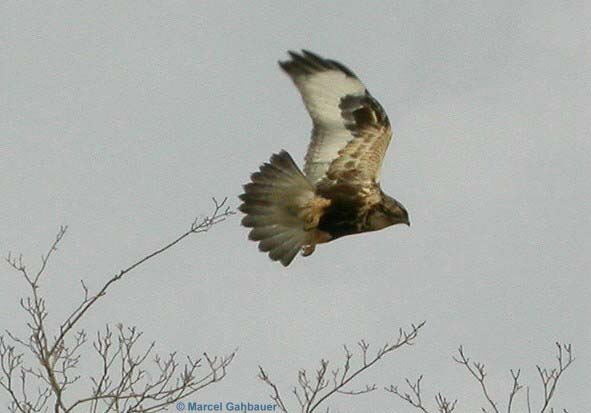
Rough-legged Hawk
Photo: Marcel Gahbauer
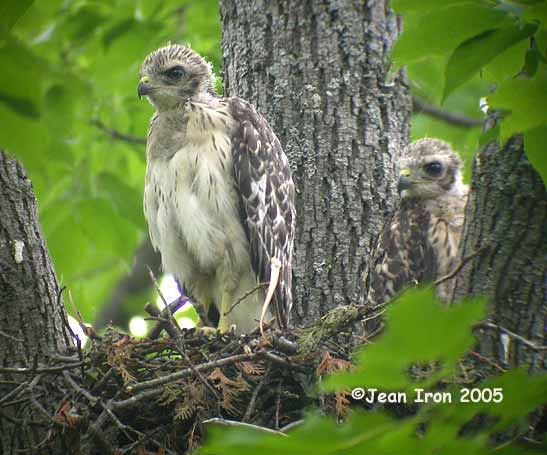
Red-shouldered Hawk
Nestlings
Photo: Jean Iron
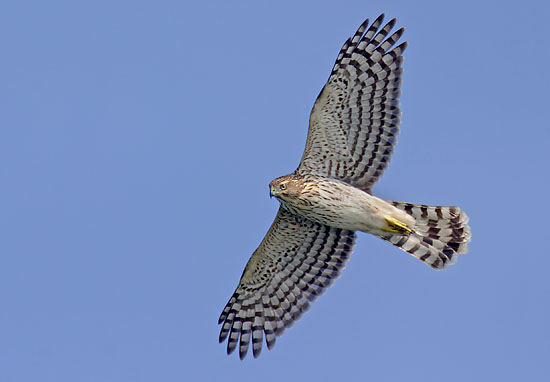
Cooper's Hawk
Immature
Photo: Brandon Holden
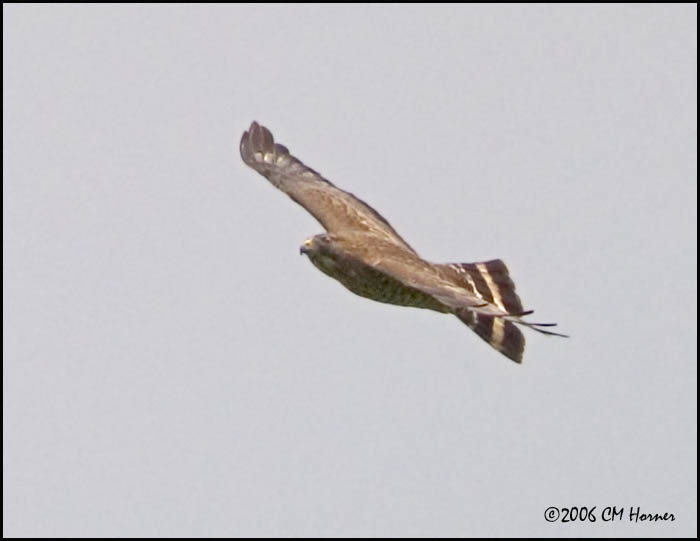
Broad-winged Hawk
Photo: Carol Horner
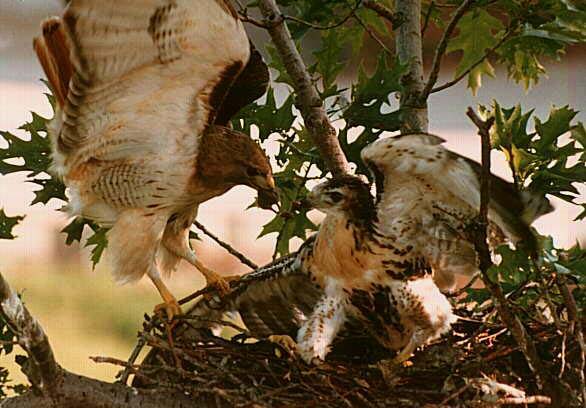
Red-tailed Hawk
Photo: Rick Lauzon

Rough-legged Hawk
Photo: Frank and Sandra Horvath
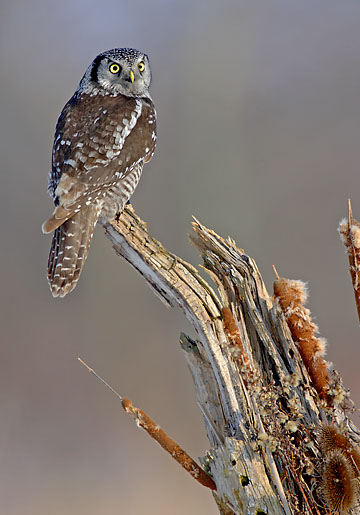
Northern Hawk Owl
Photo: Brandon Holden
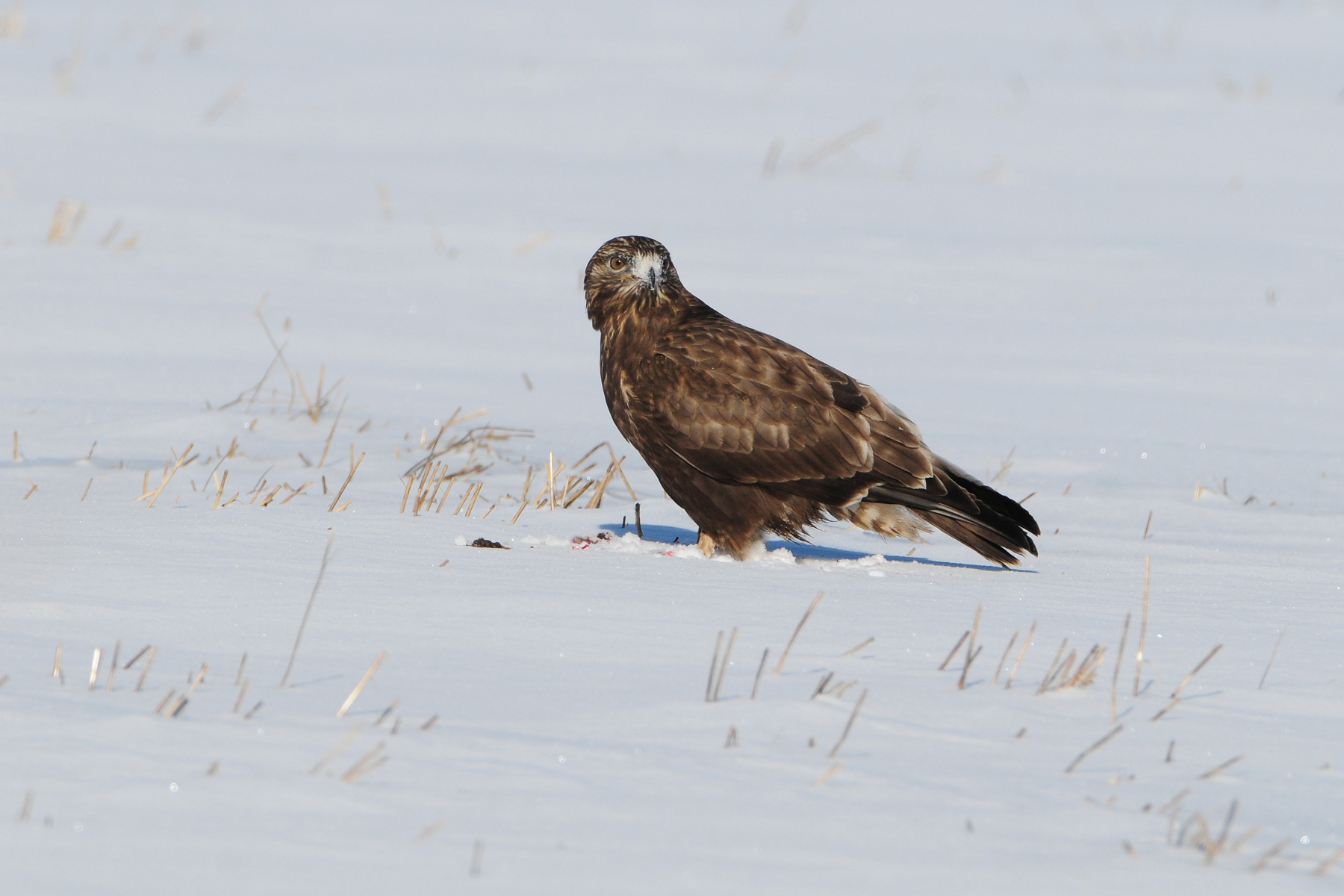
Rough-legged Hawk
Photo: Sam Barone
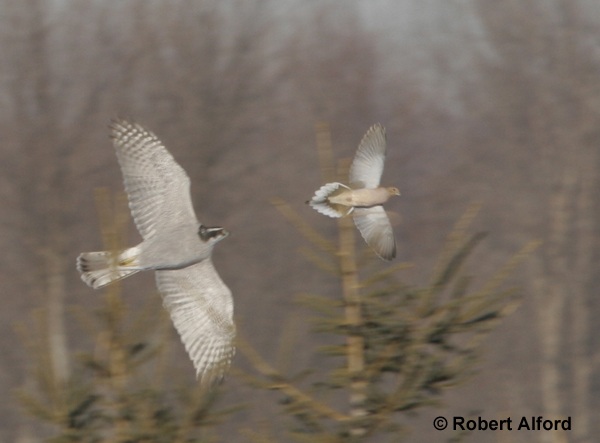
American Goshawk
Chasing a Mourning Dove
Photo: Robert Alford
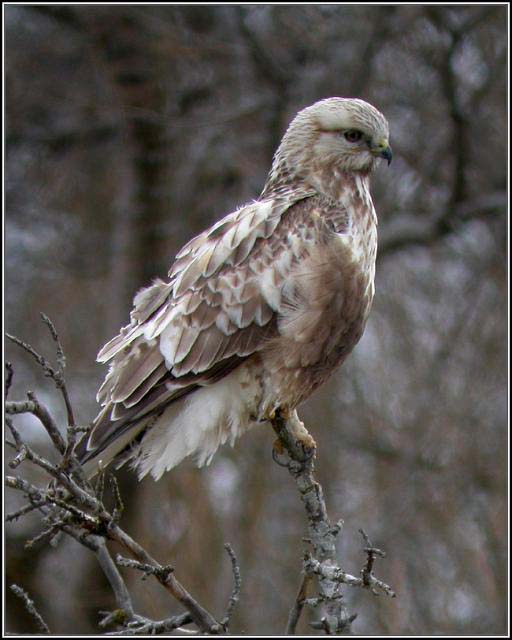
Rough-legged Hawk
Photo: Rick Lauzon

Northern Hawk Owl
Photo: Brandon Holden

Cooper's Hawk
Juvenile
Photo: Homer Caliwag
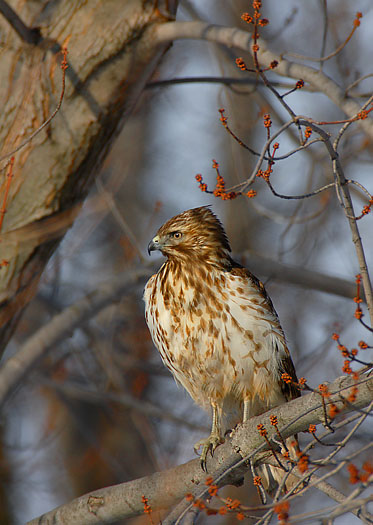
Red-shouldered Hawk
Immature
Photo: Brandon Holden
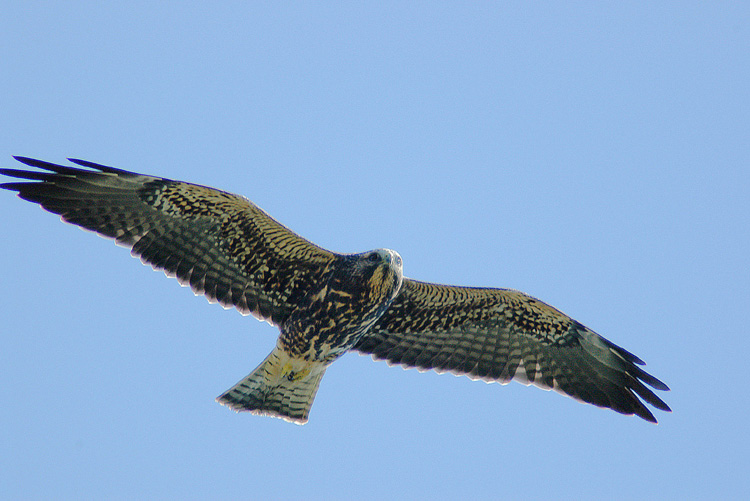
Swainson's Hawk
Immature dark morph
Photo: Barry Cherriere
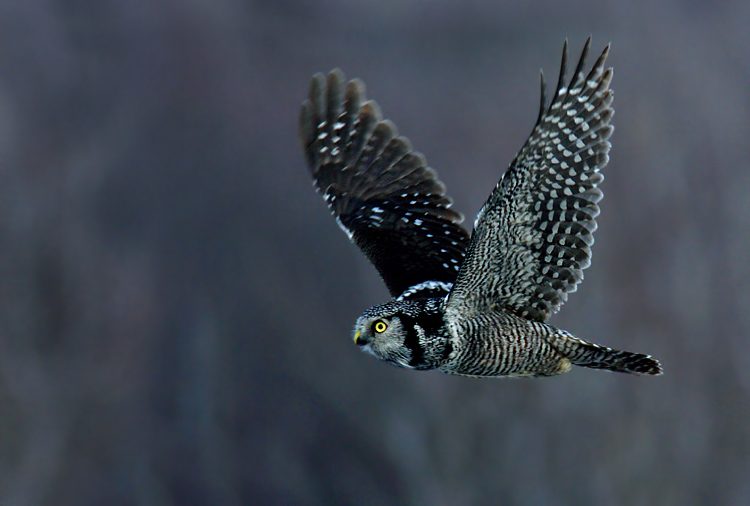
Northern Hawk Owl
Photo: Brandon Holden
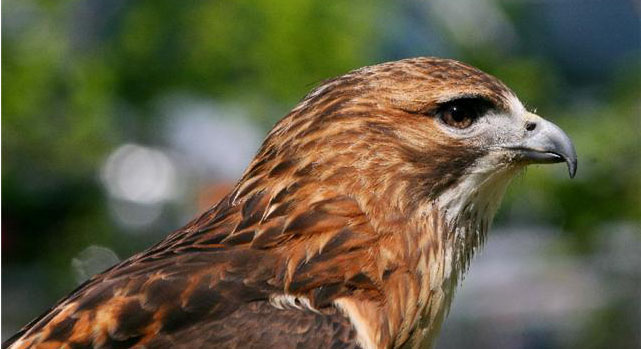
Red-shouldered Hawk
Photo: Sandra and Frank Horvath
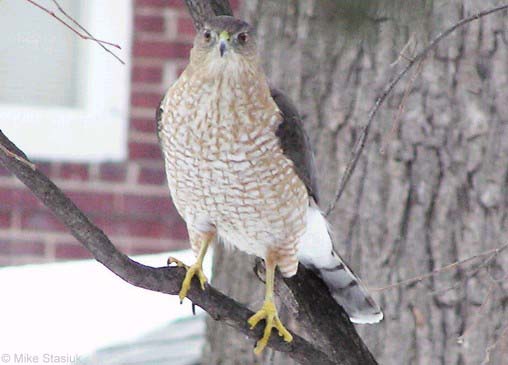
Cooper's Hawk
Photo: Mike Stasiuk
